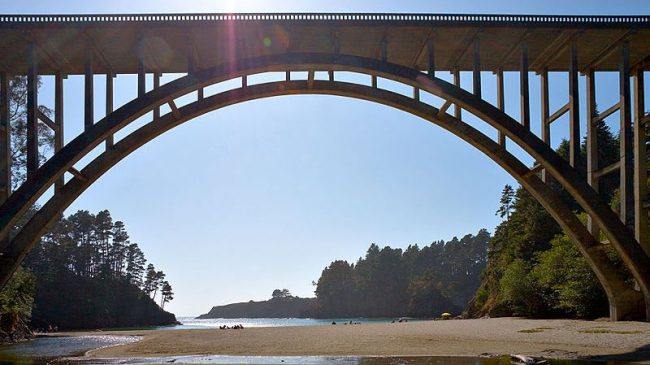When Larry Hogan won the Maryland Governor’s race in 2014 roadway boosters celebrated. Yet for transportation supporters, Hogan has been one of the most disappointing Governors.
Under Democratic leadership, Maryland prioritized transit, cycling and walking projects over roadway projects. The fact that 83% of commuters drove, 9% of commuters took transit and very few biked and walked was not important to the State’s leadership. Most Democratic governors pursued an aggressive smart growth philosophy that, combined with most Maryland counties de facto growth boundaries, prevented new roadway construction. As a business leader Hogan was a champion of roadways and during his Gubernatorial race he promised to find funding to reduce congestion.
In reality, Hogan has been a big disappointment on transportation issues, mostly due to his animosity toward tolls. One of his first transportation acts was to rescind toll increases for the state’s seven toll roads and bridges (not including the variably-priced Intercounty Connector). It was a smart political move but a terrible transportation choice. Under Democratic leadership, the price of the Bay Bridge had remained static at $2.50 since the 1970’s. In 2011 the toll was increased to $4 and in 2013 to $6. That’s a large increase, but adjusted for inflation, that 1970’s toll of $2.50 would be $10.83 in 2013 dollars. Hogan, however, lowered that $6 toll to $4. And EZ Pass customers, who make up more than 50% of bridge users, pay $2.50 a 37% discount.
The 4.34-mile bridges (one in each direction) are among the longest over-water structures in the world. In the summer, the bridges are routinely congested for 8 hours at a time or more. The westbound span is functionally obsolete and has numerous safety issues. The bridges badly need to be modernized and widened. That’s not going to happen at the current rates. Instead, Maryland will struggle to find the funds to maintain these bridges.
Cheaper tolls mean less revenue for Maryland’s other bridges. As a result, earlier this year, Hogan cut the Nice Bridge replacement project. The 76-year old Nice Bridge lacks shoulders and a median barrier. It is both structurally deficient and dangerous. A broken down car creates a miles-long traffic jam. An analysis shows that the bridge could last another 30 years but would suck a disproportionate amount of funding from the state’s budget. As a result, a benefit-cost analysis shows that building a new bridge is better than maintaining the old one. But without the resources, Maryland cannot act.
The final straw to many was Hogan’s insistence he would neither build a new bridge nor improve the existing crossings over the Potomac in the Washington area. Currently, there are no bridges between the I-495 crossing, which connects McLean, Virginia to Bethesda, Maryland, and the US 15 crossing which connects rural northern Loudoun County, Virginia to rural Frederick County, Maryland. A new bridge would help reduce the crippling congestion on the I-495 American Legion bridge which can last from 6:00 AM in the morning to 9:00 PM in the evening on weekdays and from 9:00 AM to 9:00 PM on Saturday and Sunday. A bridge could connect to Maryland to the expressway portion of SR 28, an outer beltway that runs from Virginia SR 7 to I-66. A bridge could also connect the I-270 Science Corridor to the Reston-Herndon technology corridor and substantially reduce commute distances between the states as well as improve air quality. But Maryland Governor Hogan is opposed.
Another option would be to extend the I-495 express lanes from SR 267 in Virginia to I-270 in Maryland. Currently, the end of the HOT lanes leads to a funnel that creates miles-long backups on I-495. Virginia examined extending the HOT lanes to the American Legion bridge; the project provides some relief and is worth building. But the bigger solution, and the reason why Virginia is hesitant to extend the HOT lanes now, is Maryland would still need to build its portion to I-270 for maximum relief. And for now Maryland Governor Hogan is opposed.
Hogan’s opposition to a better roadway network is odd because a better transportation system helps the economy. While Virginia added 13,100 jobs, Maryland added 700. Virginia’s population is slightly higher but not high enough to explain how Virginia added 95 times as many jobs. Virginia’s unemployment rate is 3.9% while Maryland’s is 4.3%. Congestion is now worse in Maryland than in Virginia. Further, while Virginia is investing in a long-term network of free- and tolled-roadways, Maryland isn’t investing in anything. In fact, the only new expressway capacity that has opened in Maryland in the last 35 years is the Intercounty Connector.
While I may disagree with Virginia Governor Terry McAuliffe on many issues including some transportation projects, his administration has been a leader on transportation policy creating a long-term vision. In contrast, Maryland Governor Larry Hogan has been pursuing short-term politically minded goals over long term needs. Perhaps once he wins re-election Hogan will be more open to creative solutions. But for now, his approach will lead to a long-term mess–not how he wants to be remembered.

